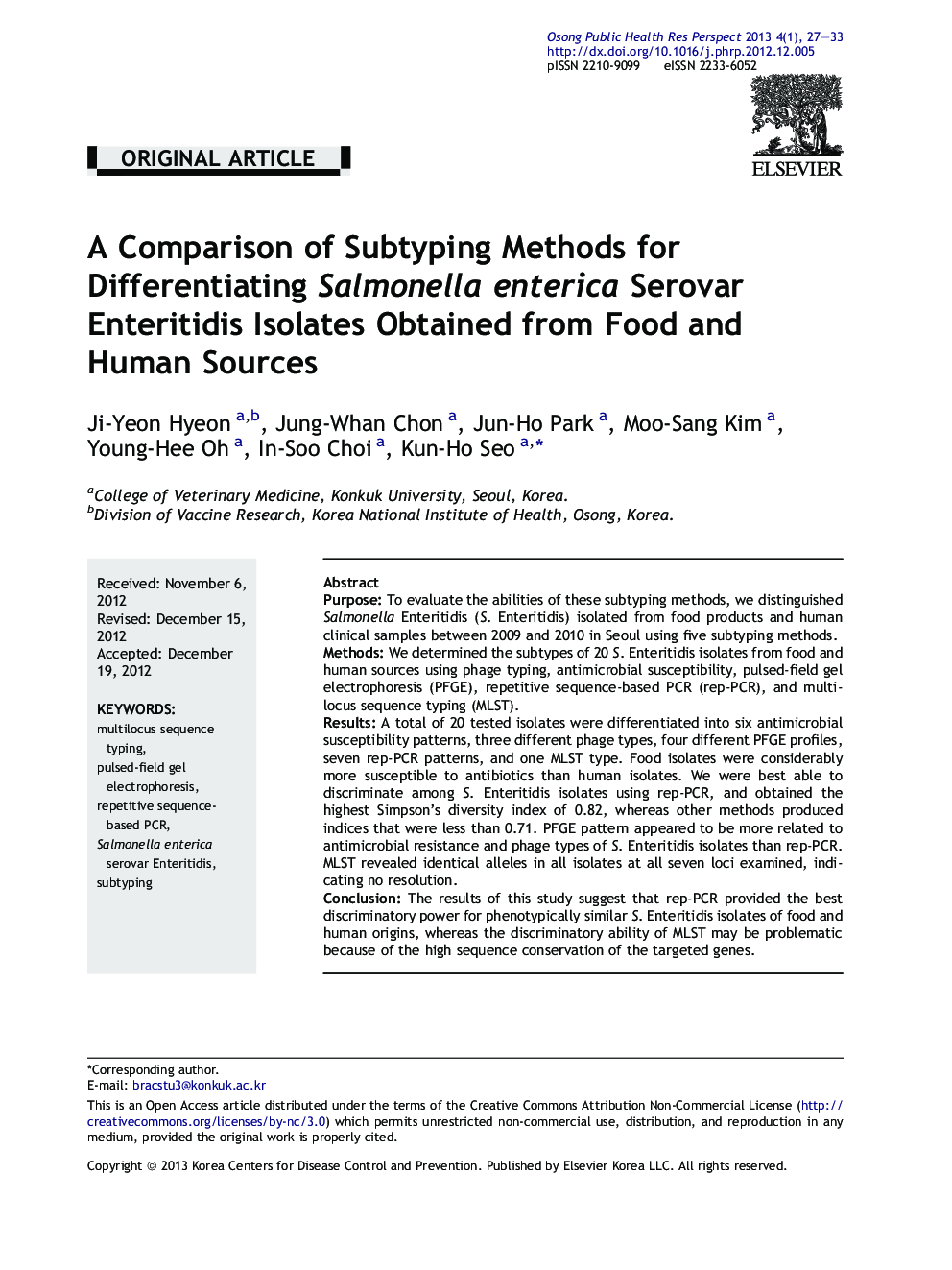| کد مقاله | کد نشریه | سال انتشار | مقاله انگلیسی | نسخه تمام متن |
|---|---|---|---|---|
| 4202104 | 1279446 | 2013 | 7 صفحه PDF | دانلود رایگان |

PurposeTo evaluate the abilities of these subtyping methods, we distinguished Salmonella Enteritidis (S. Enteritidis) isolated from food products and human clinical samples between 2009 and 2010 in Seoul using five subtyping methods.MethodsWe determined the subtypes of 20 S. Enteritidis isolates from food and human sources using phage typing, antimicrobial susceptibility, pulsed-field gel electrophoresis (PFGE), repetitive sequence-based PCR (rep-PCR), and multilocus sequence typing (MLST).ResultsA total of 20 tested isolates were differentiated into six antimicrobial susceptibility patterns, three different phage types, four different PFGE profiles, seven rep-PCR patterns, and one MLST type. Food isolates were considerably more susceptible to antibiotics than human isolates. We were best able to discriminate among S. Enteritidis isolates using rep-PCR, and obtained the highest Simpson's diversity index of 0.82, whereas other methods produced indices that were less than 0.71. PFGE pattern appeared to be more related to antimicrobial resistance and phage types of S. Enteritidis isolates than rep-PCR. MLST revealed identical alleles in all isolates at all seven loci examined, indicating no resolution.ConclusionThe results of this study suggest that rep-PCR provided the best discriminatory power for phenotypically similar S. Enteritidis isolates of food and human origins, whereas the discriminatory ability of MLST may be problematic because of the high sequence conservation of the targeted genes.
Journal: Osong Public Health and Research Perspectives - Volume 4, Issue 1, February 2013, Pages 27–33